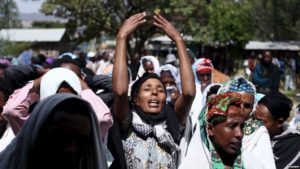Attending the Unseen event was definitely inspiring for me, especially because I saw so many students, faculty, staff, alum, and members of the broader New York community in attendance, which showed that people are interested in understanding the hidden lives of so many that are now being unveiled. However, as someone who cares about active change and work towards social change, I wondered how the event would actually impact the actions of people in the Barnard Community. The two speakers spoke about how this archive would impact the photo editing practices at the New York Times, as editors will pay closer attention to how they are choosing photos and if those photo choices are in any way shaped by biases. However, I questioned the impact this would have on people outside of the world of photo editing who attended the event. Would they actually change their understandings of how race impacts their every day lives or would this just be another event with an interesting topic but a lack of action to combat racism.
My most pertinent question following the event is how do we as people within an elitist community of Barnard make certain ideas or perspectives unseen as well and I hope that I can answer this with due time. I want to ensure that I am not feeding into the erasure of certain voices or ideologies. I hope that we as a college, and that each person that attended that event is actively thinking about the ways they may be silencing certain perspectives because I think even that as a first step could be helpful. However, this needs to go further and people need to take active steps to ensuring that people and communities are seen. Even in our work in different archives, we should be looking to ensure that they are used in such a way that the most unseen and hidden perspectives are brought to light. It is our duty, especially with the access that we have been granted at Barnard and Columbia that we uncover silenced and undermined people and communities in every way we can.



